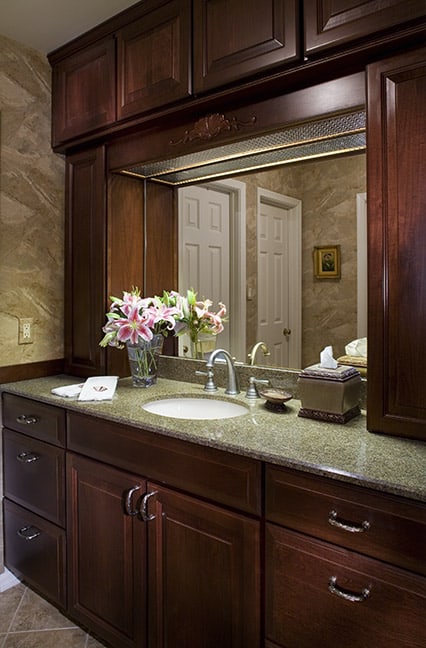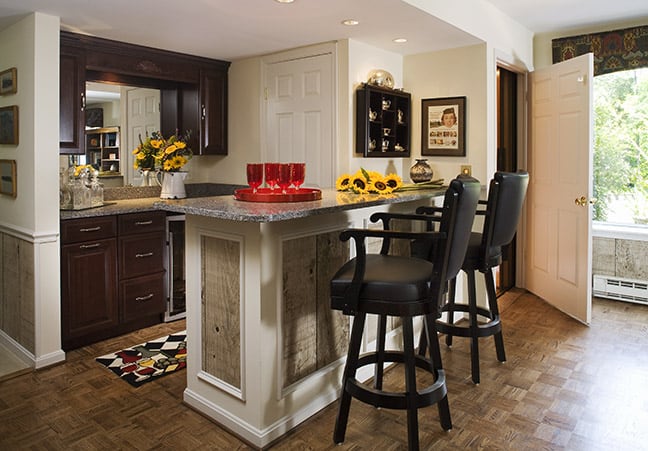Aging in Place
5 Star Universal Design Company
- Interiors designed for your specific physical accessibility needs
- Facilitating installation of safe environments including the following: Grab bars, stair lifts, elevators, ramps, lighting for aging eye
- Is the best place your existing home or a new home that meets your needs?
The following home safety tips for seniors can help keep you and your loved ones safe. Approximately one-third of adults age 65 years or older fall in their home each year, resulting in injury, long-term disability and premature loss of independence. By 2020, the Centers for Disease Control and Prevention estimates the cost related to these kinds of injuries to be $60 Billion a year.
Articles on Aging in Place
- https://www.sdmmag.com/articles/95326-aging-in-place-the-next-big-opportunity
- https://www.nia.nih.gov/health/aging-place-growing-older-home
- https://www.fool.com/investing/2019/12/12/how-to-profit-from-the-massive-aging-in-place-heal.aspx
- https://liveinplacedesigns.com/aging-in-place-lifestyle/the-5-stages-of-aging-at-home/
General Home Safety
- Consider a medical alert or a buddy system.
- Keep a fire extinguisher and smoke detector on every floor.
- Never smoke when alone or in bed.
- Always get up slowly after sitting or lying down. Take your time, and make sure you have your balance.
- Wear proper fitting shoes with low heels.
- Use a correctly measured walking aid.
- Remove or tack down all scatter rugs.
- Remove electrical or telephone cords from traffic areas.
- Avoid using slippery wax on floors.
- Wipe up spills promptly.
- Avoid standing on ladders or chairs.
- Have sturdy rails for all stairs inside and outside the house, or, if necessary, purchase a stairlift.
- Use only non-glare 100 watt or greater incandescent bulbs (or the fluorescent equivalents.)
- Make sure that all stair cases have good lighting with switches at top and bottom.
- Make sure that staircase steps should have a non-slip surface.
Kitchen Safety
- Keep floors clean and uncluttered.
- Illuminate work areas.
- Mark “on” and “off” positions on appliances clearly and with bright colors.
- Store sharp knives in a rack.
- Use a kettle with an automatic shut-off.
- Store heavier objects at waist level.
- Store hazardous items separate from food.
- Avoid wearing long, loose clothing when cooking over the stove.
- Make sure food is rotated regularly and check expiration dates.
Basic Emergency Items for Seniors
Keep these items in a clearly labeled container so they can be easily found and used in case of an emergency. A battery-powered radio – make sure to note which stations provide information in case of a disaster.
- Two battery or solar-powered flashlights. There are also flashlights that can be powered with hand cranks so batteries are not necessary. Make sure the light is bright enough to be useful.
- Extra batteries for hearing aids, flashlights and radios.
- A first-aid kit – regularly check the contents of your kit to ensure there are no expired ointments or other items and make sure its contents are appropriate for the elderly person.
- An extra pair of glasses.
- Extra equipment or medical supplies such as wheelchair batteries or oxygen.
- Note the serial number, make and style of medical devices such as pacemakers.
- Medical insurance and Medicare cards.
- Medical alert wallet card or bracelet – something that identifies hidden medical conditions if an elderly person can’t talk.
- A list of prescription medications and dosage amounts.
- A list of the names and phone numbers of physicians and emergency contacts.
Protect Against Abuse
- Keep your windows and doors locked at all times.
- Never let a stranger into your home when you are there alone.
- Talk over offers made by telephone salespeople with a friend or family member.
- Always ask for written information about any offers, prizes, or charities and wait to respond until you have reviewed the information thoroughly.
- Do not let yourself be pressured into making purchases, signing contracts, or making donations. It is never rude to wait and discuss the plans with a family member or friend.
Bathroom Safety
- Leave a light on in your bathroom at night.
- Use recommended bath aids, securely installed on the walls of the bath/shower stall and on the sides of the toilet.
- Skid-proof the tub and make sure the bath mat has a non-slip bottom.
- To avoid scalds, turn water heater to 120 degrees Fahrenheit or below.
- Mark cold and hot faucets clearly.
- Use door locks that can be opened from both sides.
- If possible, bathe only when help is available.
Drug Safety
- Review your medicines frequently with your doctor or pharmacist and when you take new medication.
- Make sure medicines are clearly labeled.
- Read medicine labels in good light to ensure you have the right medicine and always take the correct dose.
- Dispose of any old or used medicines.
- Never borrow prescription drugs from others.
- Check with your doctor or pharmacist before you mix alcohol and your drugs.
- Have medication dispensed in a bubble pack or convenient dispenser.
- Check with your doctor or pharmacist before mixing non-prescription drugs and prescription drugs.
Prevent Poisoning
Carbon Monoxide
- Never try to heat your home with your stove, oven, or grill since these can give off carbon monoxide–a deadly gas that you cannot see or smell.
- Make sure there is a carbon monoxide detector near all bedrooms, and be sure to test and replace the battery two times a year.
Medications
- Keep all medications in their original containers so you don’t mix up medicines.
- Ask your pharmacist to put large-print labels on your medications to make them easier to read.
- Take your medications in a well-lit room, so you can see the labels.
- Bring all of your pill bottles with you to your healthcare provider’s appointments so he or she can look at them and make sure you are taking them correctly.
Cleaning products
- Never mix bleach, ammonia, or other cleaning liquids together when you are cleaning. When mixed, cleaning liquids can create deadly gases.









